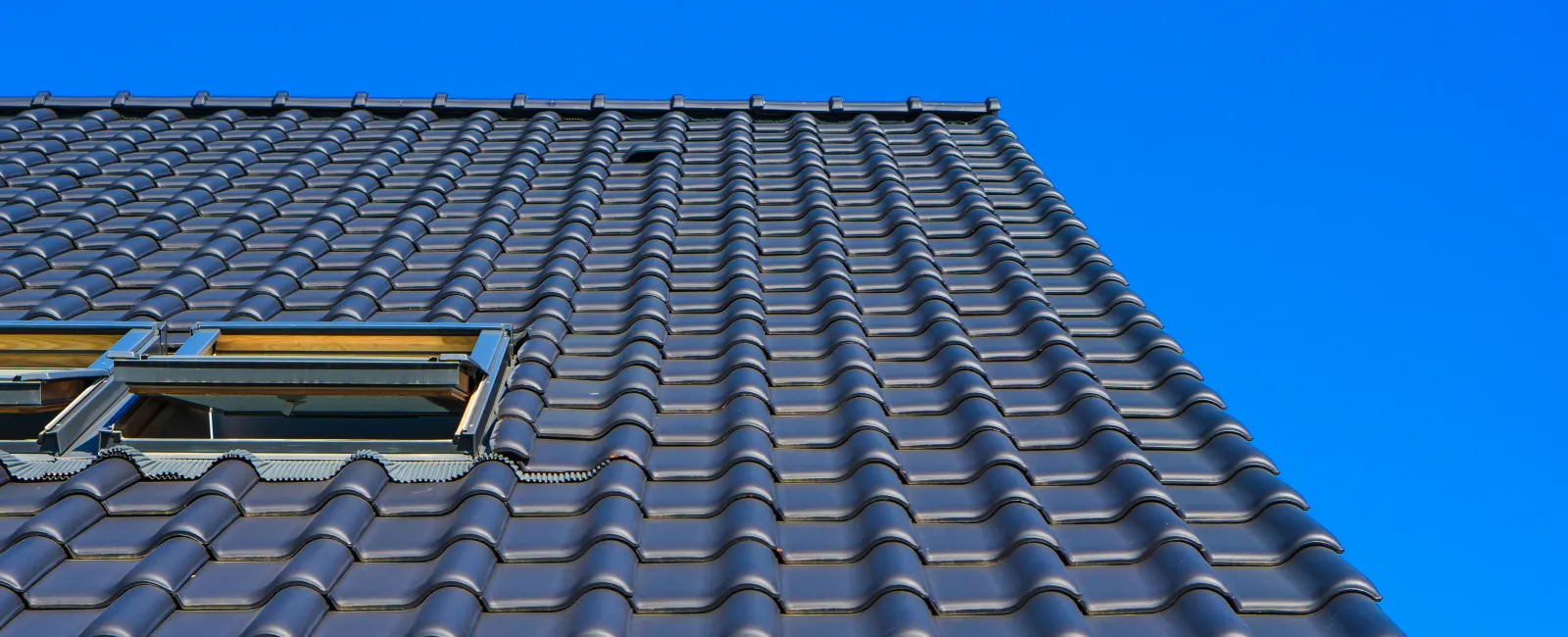Residential, commercial, and historical properties have long turned to tile roofing due to its substantial durability and stunning appearance. Much like other roofing materials, the benefits and protection they provide can quickly disappear without essential maintenance measures.
With our expertise, we're here to help break down the ins and outs of tile roof maintenance so your property can flourish for years to come.
TL;DR
Tile roofing offers numerous benefits for property owners, including enhanced weather resistance, increased durability, improved energy efficiency, and extended longevity. However, these qualities can be hindered or lost if essential maintenance measures aren't taken.
Whether your roof has clay tiles or concrete tiles, prioritize tile roof maintenance tasks such as:
Scheduling regular inspections
Conducting frequent cleaning
Inspecting the roof's flashing and sealants
Addressing repairs and replacements as necessary
Don't forget gutter and drainage maintenance
It's important to note that clay and concrete tiles have unique differences. Depending on the material used, more frequent or varying maintenance could be required.
Benefits of Tile Roofing
Tile is a popular roofing option for many reasons. Make sure you're being proactive about following through on maintenance requirements and don't risk losing out on these noteworthy benefits:
Weather Resistant
Tile roofing is known for its ability to withstand extreme weather conditions. With clay and concrete tiles, high winds, hail, and other elements are less likely to impact your roof's underlying structures. The tiles themselves are also designed with an outer shell that effectively sheds water. Tile roofing is especially beneficial for areas that experience more severe weather conditions, such as hurricanes.
Energy Efficient
The use of tile roofing creates an airtight barrier, leading to natural ventilation that can reduce energy costs by up to 20%. Tile roofs reduce heat loss and gain, keeping your home cool in the summer and warm in the winter.
Pest Resistant
Many types of roofing are prone to damage and pest-related complications. Not with a tile roof. Tile roofing is pest-resistant, preventing these troublesome problems.
Long Lasting (With Maintenance)
With its full range of resistance qualities, a well-maintained tile roof can last up to 100 years or even longer—an unparalleled amount of longevity.
Sustainable
Tile roofing is a sustainable choice. Tile roofing is made from natural, raw materials with no chemical preservatives, making it more environmentally friendly than petroleum-based asphalt shingle roofing. Paired with its impressive lifespan, the need for re-roofing is less frequent, reducing landfill waste. Furthermore, concrete and clay tiles can be recycled.
How To Maintain a Tile Roof
Now that we've covered the benefits of tile roofing, let's look at how to maintain a tile roof.
Scheduling Regular Inspections
One of the best ways to monitor the condition of your tile roof is to schedule regular inspections. Roof inspections, conducted twice a year, can help identify issues before they become a significant problem. For an in-depth inspection and analysis of your tile roof, trust Rising Star Roofing for a complimentary drone inspection.
Cleaning
As dust, leaves, and other debris accumulate on your roof, moisture can become trapped, leading to mold growth and tile damage. Ensure regular cleaning to prevent these issues from occurring in the first place.
Checking Flashing and Sealants
Flashing and sealants are key components of your tile roof's functionality and efficiency. Over time, flashing and sealants can deteriorate, which can affect the roof's condition. Conduct regular checks on these roofing components to ensure they remain in optimal condition.
Replacement of the Roof's Underlayment
A tile roof's underlayment, the protective layer underneath the tiles, typically needs to be replaced every 20-30 years. Depending on weather conditions, the underlayment can deteriorate at a much faster rate. Replace your tile roof's underlayment when it becomes worn or damaged to prevent leaks.
Repairing Damaged Tiles
In addition to replacing your tile roof's underlayment promptly, repairing damaged tiles is also important. Once you notice cracked or broken tiles, contact a professional to replace them, as this will help prevent further issues, such as leaks.
Effective leak prevention also relies on proper sealing techniques. Whether it's installation or repair, turn to professionals you can trust who'll provide your tile roof with sealing methods known to prevent leaks and protect your roof.
Gutter & Drainage Maintenance
Maintaining your tile roof in excellent condition also depends on proper gutter and drainage maintenance. Your gutters must be free of clogs caused by twigs, leaves, and other debris to ensure efficient drainage and protect your roof and property from water damage.
Consider installing gutter guards to help with your gutter and drainage maintenance. This gutter protection system prevents your gutters from clogging due to the buildup of twigs, leaves, and other debris.
Clay Tile Roof vs Concrete Tile Roof
Two of the most common styles of tile roofing are clay and concrete. Next, let's review the differences between clay tile roof maintenance and concrete tile roof maintenance.
Water Absorption
Concrete tiles have a water absorption rate of approximately 13%, while clay tiles have a rate of about 6%. The higher percentage of water absorption in concrete tiles increases their risk of developing mold growth and stains.
Weight
Differences in weight are significant. Concrete tiles weigh almost 40% more than clay tiles, underscoring the importance of a strong home structure if you prefer concrete.
Broken Tiles
Even with their durability, clay tiles are more likely to crack and break in lower temperatures. This is why in warmer climates, properties choose clay as their roofing material of choice. Concrete handles a far wider range of climates more effectively than clay.
Maintenance
With concrete's weight and water absorption, maintenance is much more challenging. Clay is much easier to maintain.
Color
Clay tiles retain their original color for longer periods, even when exposed to severe weather. The painting used for concrete tiles is not only known for being less effective and fading over time, but concrete is also prone to staining.
Durability
Generally speaking, tile roofing is known for its heightened durability. When comparing the specific durability of clay and concrete tiles, clay offers more durability than concrete.
Conclusion
Roof maintenance is a crucial aspect of maintaining your property's protection. The benefits of tile roofing can diminish over time, leaving your home's foundation vulnerable to damage. Prioritize tile roof maintenance to extend your property's lifespan and enjoy the many benefits of tile roofing.
Contact us today for all of your tile roofing needs. With over 100 years of experience, Rising Star Roofing is your premier choice for tile roof inspections, installation, repair, and more.

